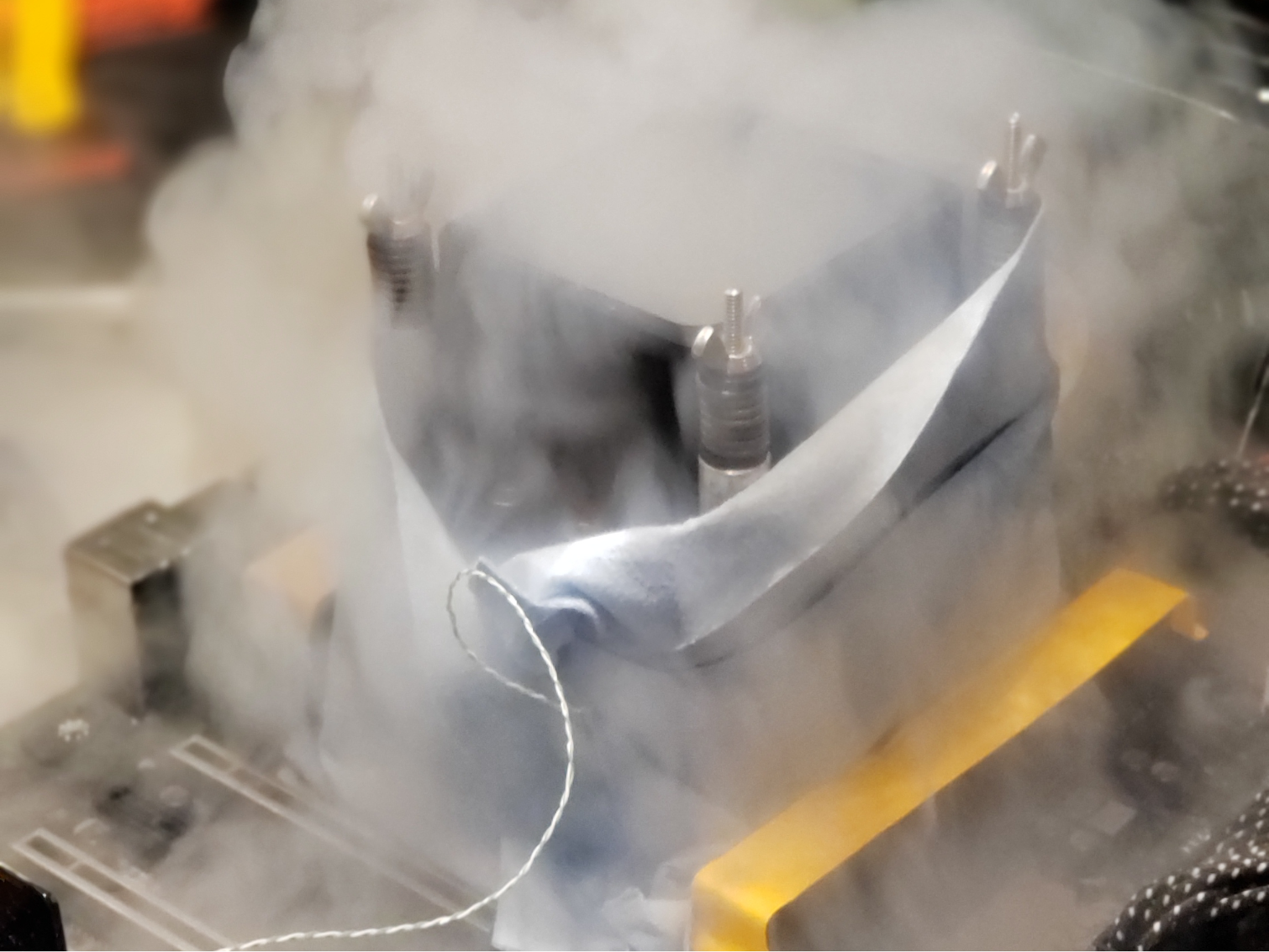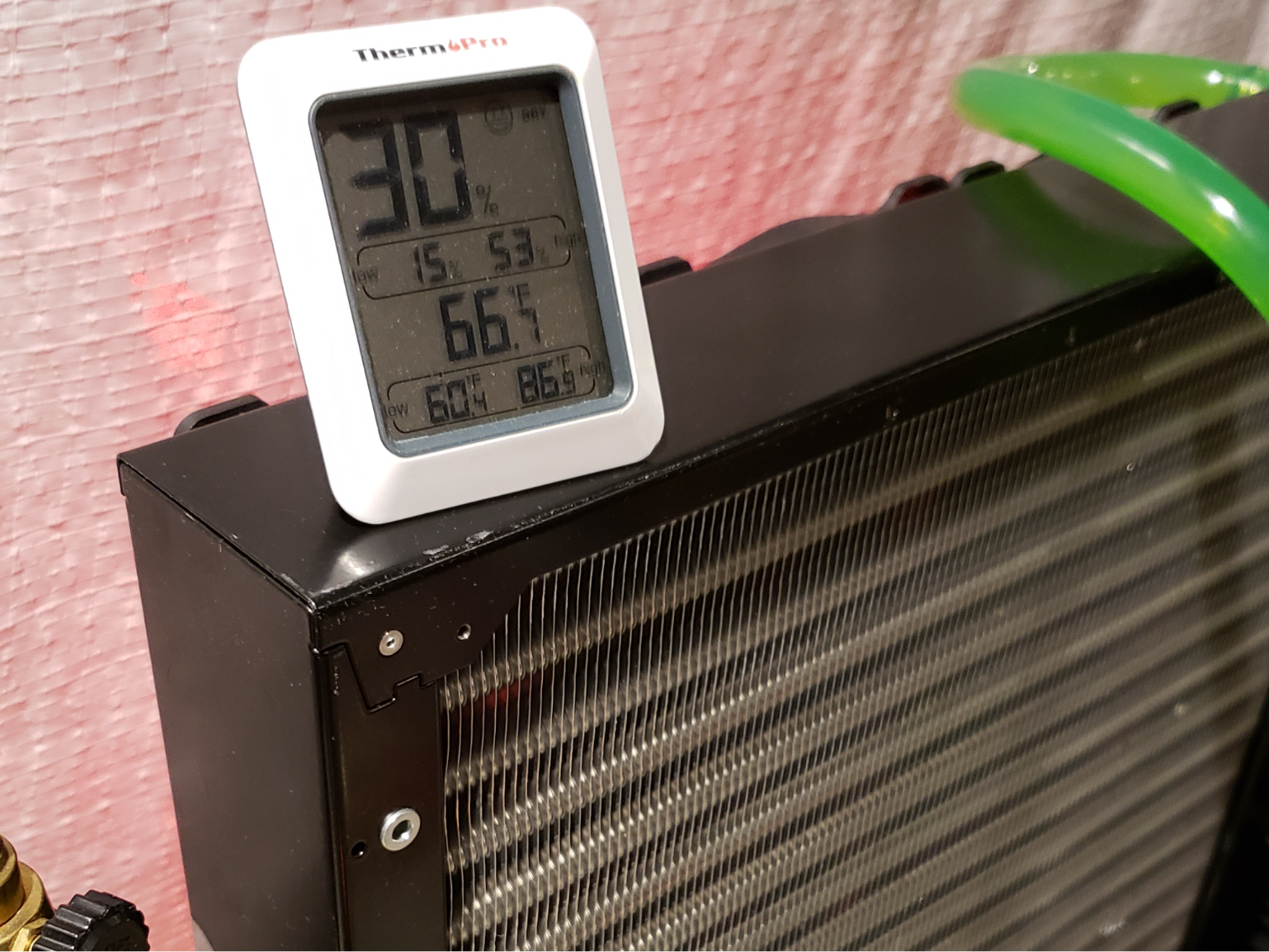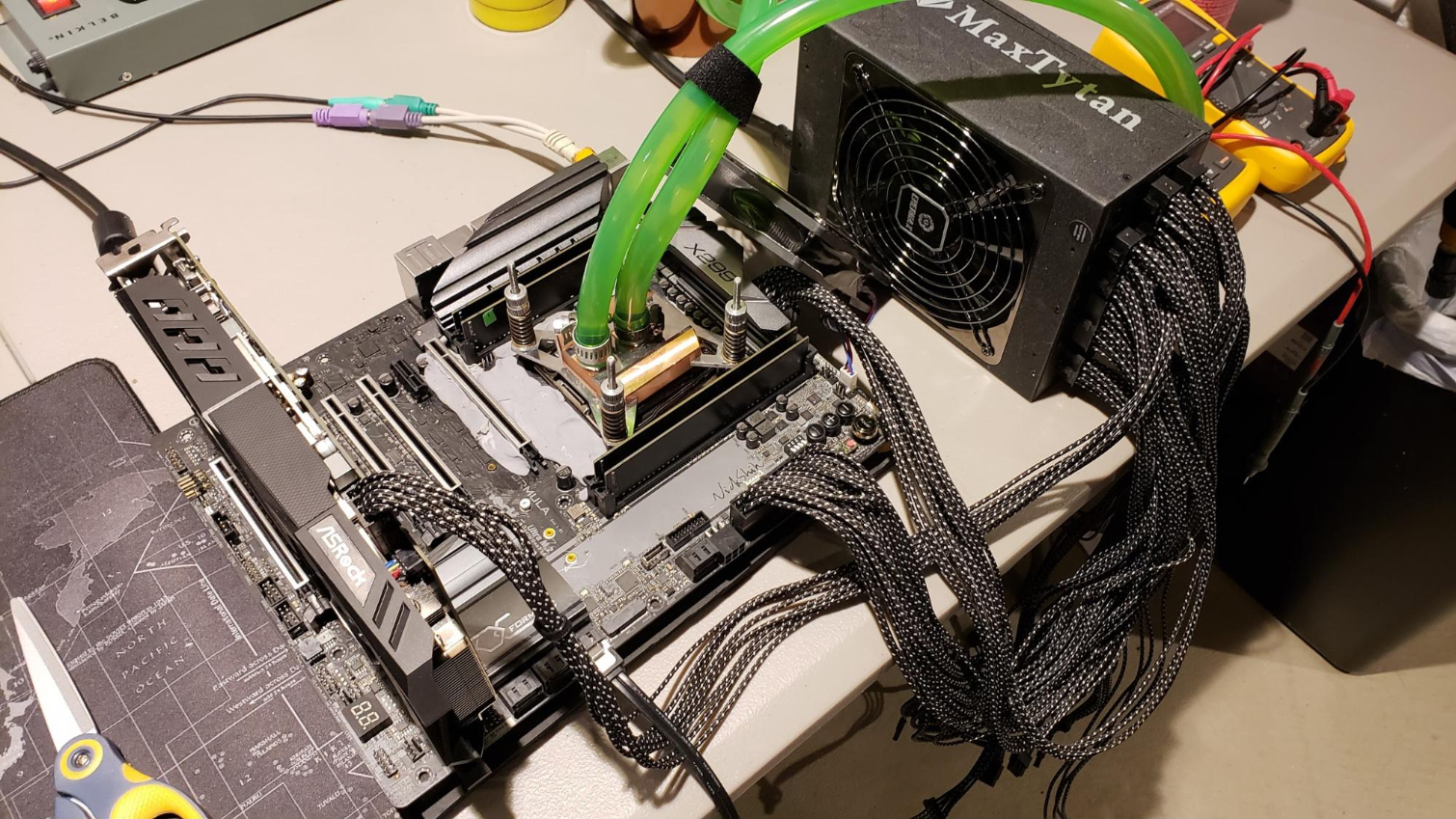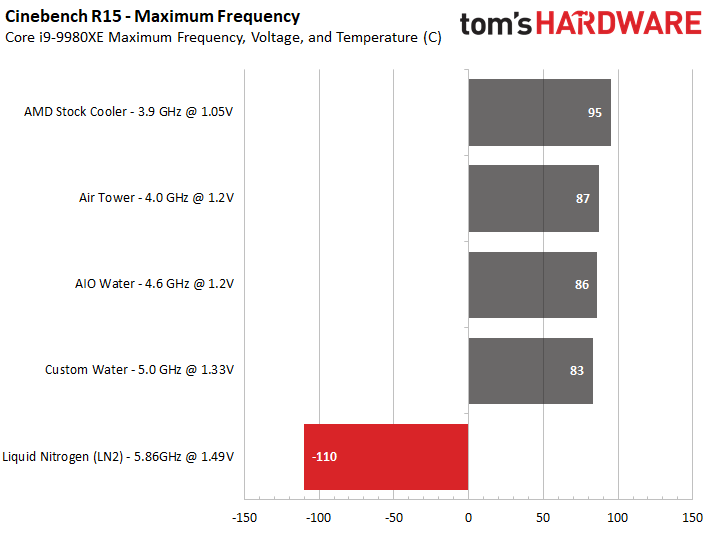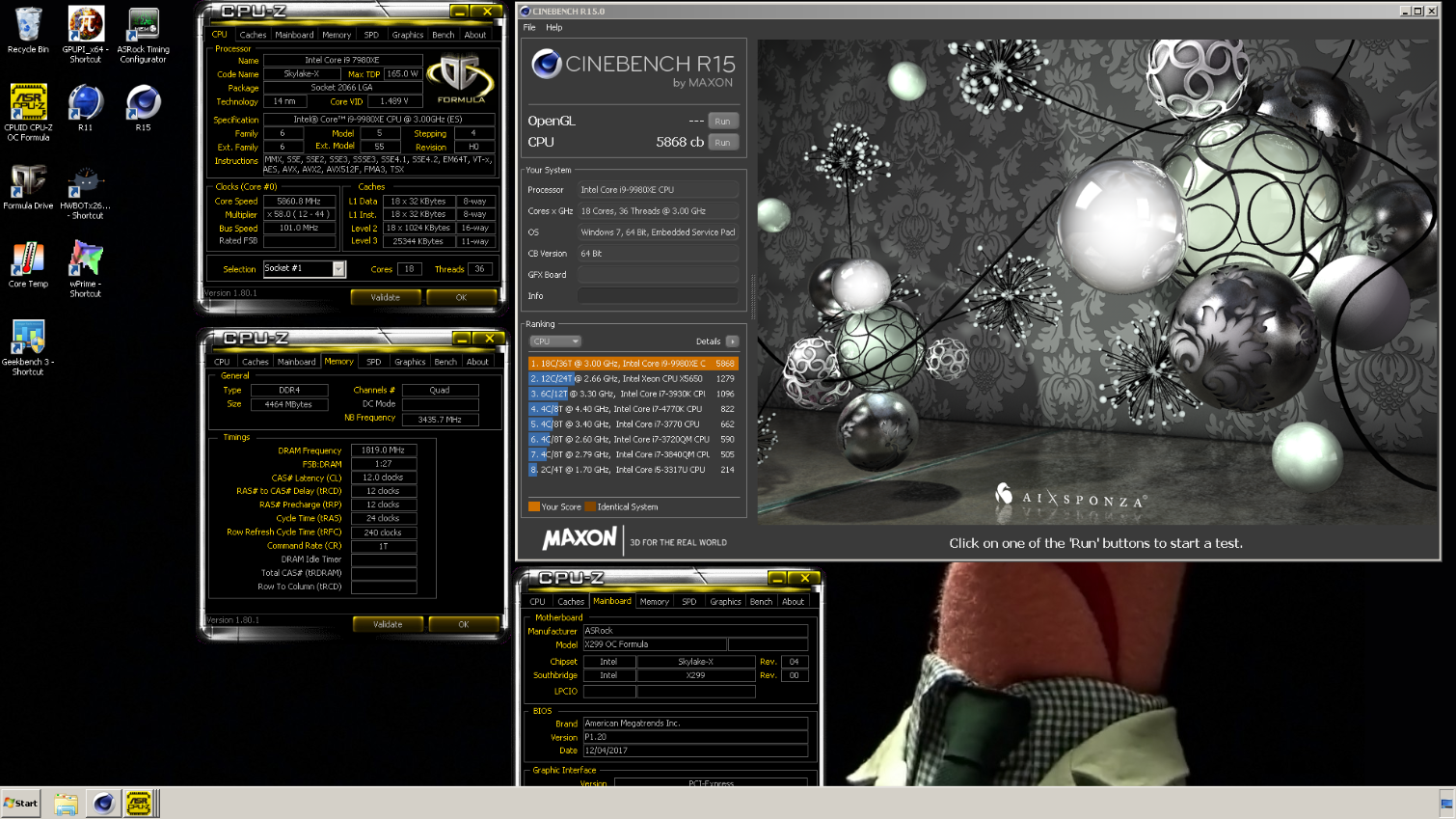Liquid Nitrogen, CPU Solder and High Voltage: How I Set Overclocking Records
Editor’s Note: We’re excited to present our first article from Allen “Splave” Golibersuch, who as of this writing, is the top-ranked overclocker in the world. In this ongoing series, Splave will take you behind the scenes and show how he breaks world records on a regular basis. In writing this article, he even set a new record score for running Cinebench on an 18-core CPU.
First off let me introduce myself. My name is Allen “Splave” Golibersuch. I am a professional overclocker and have been competing for nine years now, winning the world cup every time I have participated.
I love everything to do with testing out computer gear and making it go faster than it’s supposed to. I never ignore a single message asking for tips or overclocking/performance based inquires. This is my passion 100% and not my “job” at all.
My plan here at Tom’s is not to give you all the facts or to go in-depth on architecture or even direct you to the best performance per dollar etc. I'm here to fulfill your computer fantasy. I am here to light stuff on fire, to pour liquid nitrogen and to break things.
We are going to go on journeys into the unknown and untested and learn some things on the way (probably what not to do). Bleeding edge is an understatement to what our goals are going to be, and I am very excited to have Tom’s Hardware and its readers on the ride.
Different Cooling Methods
For those of you that are new to extreme overclocking I want my introductory article to introduce you to just how much you can gain from liquid nitrogen cooling a processor. Most normal overclocking starts with a progression of stock cooler, to some form of heat pipe air cooler, to an all-in-one closed loop water cooler(AIO) to a custom high-end water cooler.
In extreme overclocking, we step up to some sort of refrigerated cooling (i.e. a water chiller), then to phase change, then to dry ice and finally to LN2 (Liquid Nitrogen). So let’s see what we can achieve at each of these levels of cooling on Intel’s 18-core Core i9-9980XE processor, the fastest High-End Desktop (HEDT) processor right now.
Get Tom's Hardware's best news and in-depth reviews, straight to your inbox.
Solder TIM and the Dangers of Delidding
Many people would consider the Core i9-9980XE to be only a small improvement over the earlier, Core i9-7980xe, but by using solder TIM (thermal interface material) to attach the lid to the CPU die, Intel made a big improvement for extreme overclockers. Because the previous-generation 8-series processors (and their predecessors) used thermal paste, we had to “delid” them, taking the protective metal cover off of the die so we could replace Intel’s weak-sauce paste with a higher-quality, third-party substance.
Delidding is very risky. Just imagine that you take an expensive processor, remove its lid and change to a premium thermal paste such as Thermal Grizzly Kroynaut. Now you put that processor on LN2 and freeze it down to around -150 degrees Celsius (on your way to -196 degrees) when you hear a terrifying “snap” sound, which means that you just lost your CPU mount and your only recourse is reflowing the paste. Even after doing that, you will never achieve as high of a clock as you would before “snapping.” This is quite a process to perform while juggling a torch and liters of LN2 as water potentially forms on your motherboard.
So, thankfully, with solder, delidding is not needed, thermal paste does not snap anymore and life is grand. We can keep our LN2 pots full of cold sauce with no worries and focus purely on speed.
Overclocking the Core i9-9980XE: A New World Record
To show you how important LN2 cooling is, let’s start our tests like a noob and use a stock cooler, then make our way over to liquid nitrogen. To measure speed, we utilize Cinebench R15, which is the gold standard for us extreme overclockers because it gives us a crazy high load on the chip and is relatively quick to finish so you can run it again and again.
The best processors allow the lowest voltage to pass at a given frequency. For example a Core i9-9900k that passes at 5.3 GHz with a 1.3 volts better than one that needs a 1.35V Vcore to hit 5.3 GHz. The best chip on R15 will also be the best chip on a stability test such as prime95.
An assortment of coolers I have on hand will be used. They range from the mundane tower heatpipe cooler to excotic water cool and finally ln2. But then I spotted an old AMD cooler in my drawer looking dejected and it got the gears in my head turning, surely this wont work….so let’s try that too. Mounting will be using wreath wire through the mounting holes. This is worst case scenario, which is fairly common for me.
Our Test Setup
| Software | Windows 7 x64 |
| Hardware | Cinebench R15.038Intel Core i9-9980XE processor (provided by ASRock) ASRock X299 OC Formula motherboard with BIOS 1.20Team Group 4x8gb 4300mhz “B-die” memory Enermax Maxtytan 1250w Power supplyAMD Stock cooler (just for the heck of it)Cheapo heatpipe tower air cooler LEPA AquaChanger 240mm AIO coolerHeatkiller IV block, MO-RA3 360 LT, 9x120 Corsair AF120Der8auer TR Copper LN2 Pot |
| Misc | Thermal Grizzly Kryonaut |
Test Results
Results and How We Got Them
To get a higher CPU clock speed, we need more voltage and, to allow more voltage, we need more cooling. Therefore, the most powerful cooler is always going to win. Kudos to Intel for running so well that an overclock of 400 MHz is possible at only 1.05V Vcore on an AMD 939 Opteron cpu cooler! That’s quite impressive for an 18-core powerhouse. The AIO water cooler performed admirably and was not far off of the ridiculous monolith radiator that is the MO-RA3 and full copper heatkiller CPU block.
However, as always, liquid nitrogen is the king. I was able to achieve the World Record for 18x Cinebench (running with 18 Cores) and dethrone the Core i9-7980XE! My Core i9-9980XE system was drawing a massive 1000w full system load and eating a quarter of a liter of LN2 per run. That translates to $0.50 a run on a $2000 processor.
Better check the couch cushions before attempting this for sure. Raising MHz little by little to get those extra couple points to take the gold is quite exhilarating. Fourth quarter, down by a field goal, winds blowing in your face, and you drill it through. Competition is the driving force of extreme overclocking; the highs are very high and the lows are quite low.
Why Extreme Overclocking Matters
Considering that you can’t use an LN2-cooled computer as your day-to-day machine (just imagine pouring the coolant with one hand while you game with the other), you might ask: why bother overclocking with it? There are several reasons why extreme overclocking is important, even to consumers who would never do it.
Let's start with the most obvious. Manufacturers use overclocking to “flex” on each other. World records in overclocking are taken seriously and these companies spend mega bucks on making sure they are on top. The fact that the ASRock OC Formula is literally built to be capable of LN2 overclocking 1000 watts worth of processor first and everything else second shows the importance of overclocking to these companies.
With the right overclocking board, you are getting an extra robust VRM (voltage regulation module) and circuitry because key players at the companies want these records in their name. These top-tier motherboards won’t even break a sweat on standard air/water overclocking. You're welcome!
Intel also takes overclocking very seriously. It has a dedicated OC lab where technicians track silicon quality, voltage scaling and long-term stress testing results. All this information is used to develop better processors for regular consumers. The company is very supportive of extreme overclockers, because can showcase these processors in a environment without the normal limits of heat and cooling. We can give them an idea of what internal voltages are scaling and how much is too much, which can help them to improve future products.
If you have purchased a flagship processor or motherboard in the last several years, you have directly benefited from extreme overclocking. Results like the ones above serve a purpose and are not just for bragging rights. Extreme overclocking is not practical, but it's not meant to be.
When you see what these processors are capable of, you get a sneak peek at what future chips may do, without such extreme measures. Overclocking at all cooling levels is great fun and I admire anyone that takes the time to learn and push their system. I hope you got a little insight into my beloved hobby of extreme overclocking, learned a bit about me and the excellent overclocking solder-spewing 18 cores of goodness that’s the Core i9-9980XE, my new favorite processor... for now.
MORE: Intel's Core i9-9900KF May Overclock Better Than 9900K
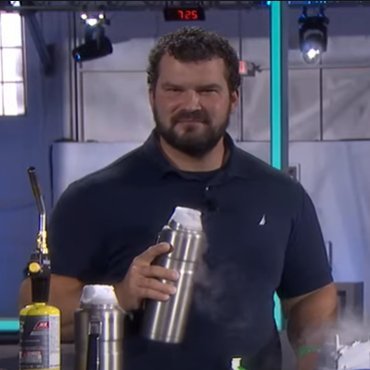
A world-champion competitive overclocker who frequently tops the charts at HWBot, a site which tracks speed records, Allen will do just about anything to push a CPU to its limits. He shares his insights into the latest processors with Tom’s Hardware readers from a hardcore, push-it-to-the-limit overclocker’s perspective.
-
rubix_1011 Looking forward to more in this series...would also be very cool to see other 'how to' types of articles from case modders, liquid cooling, custom lighting and CNC/manufacturing for DIY PC cases.Reply -
WildCard999 "Let's start with the most obvious. Manufacturers use overclocking to “flex” on each other. World records in overclocking are taken seriously and these companies spend mega bucks on making sure they are on top. The fact that the ASRock OC Formula is literally built to be capable of LN2 overclocking 1000 watts worth of processor first and everything else second shows the importance of overclocking to these companies."Reply
Can we assume that being a top overclocker that some of these companies gift you parts?
Good article! -
Roland Of Gilead Hey Splave,Reply
Have to say, I love this article. What a world away from some of the more mundane articles (although I do appreciate all of Tom's efforts).
Your introduction was brilliant. Got me laughing, excited, and very much looking forward to reading the rest of the article and whatever else is to come down the line.
Love the AMD cooler (just for the heck of it) and that it did a job on an 18 core Intel CPU. WTF!!! Seriously.
As an almost lay person in OC'ing in comparison, I do love reading about pushing things further, as in higher/extreme OC'ing. So am jotting down notes to think about.
As a matter of interest, why Win 7 as the test bed OS?
Great job, I can't wait to read more. Ge the next one up and at it, asap! :) -
WildCard999 Reply21643712 said:As a matter of interest, why Win 7 as the test bed OS?
Was curious about this as well. -
rubix_1011 ReplyAs a matter of interest, why Win 7 as the test bed OS?
I would assume the amount of OS features that can be easily disabled for minimal overhead to dedicate processing power to benchmarks. I feel like WinXP was the previous OS of choice not even that long ago.
However, if not, also quite curious. -
Roland Of Gilead Reply21643729 said:As a matter of interest, why Win 7 as the test bed OS?
I would assume the amount of OS features that can be easily disabled for minimal overhead to dedicate processing power to benchmarks. I feel like WinXP was the previous OS of choice not even that long ago.
However, if not, also quite curious.
Ah, yeah, maybe that's it! Good point. -
rubix_1011 It's the only thing I could think of, and I recall reading a similar LN2 article several years ago where they used a specific OS image for all participants for a competition and it was specifically setup to limit the number of services Windows ran while still allowing the rig to effectively run CPU and GPU benchmarks. The more power you can divert to the benchmarks instead of say, a network driver or IIS service, the better.Reply -
splave Reply
Yes I do get some goodies :D but not as much as one might think.21643676 said:"Let's start with the most obvious. Manufacturers use overclocking to “flex” on each other. World records in overclocking are taken seriously and these companies spend mega bucks on making sure they are on top. The fact that the ASRock OC Formula is literally built to be capable of LN2 overclocking 1000 watts worth of processor first and everything else second shows the importance of overclocking to these companies."
Can we assume that being a top overclocker that some of these companies gift you parts?
Good article!
